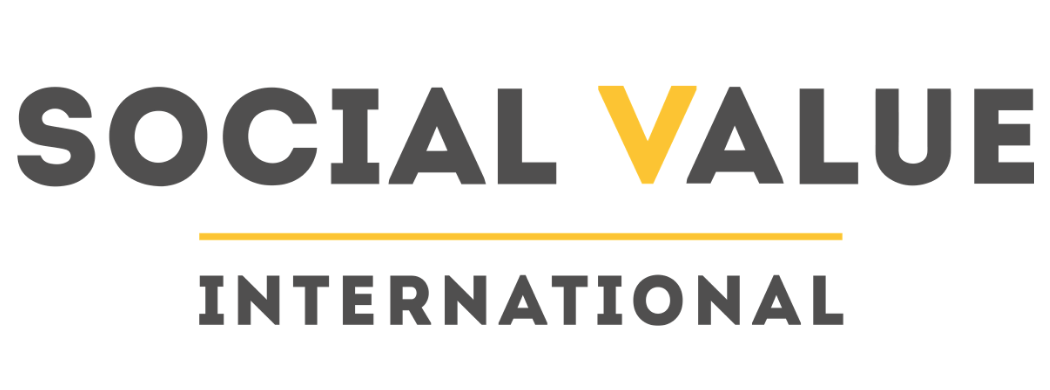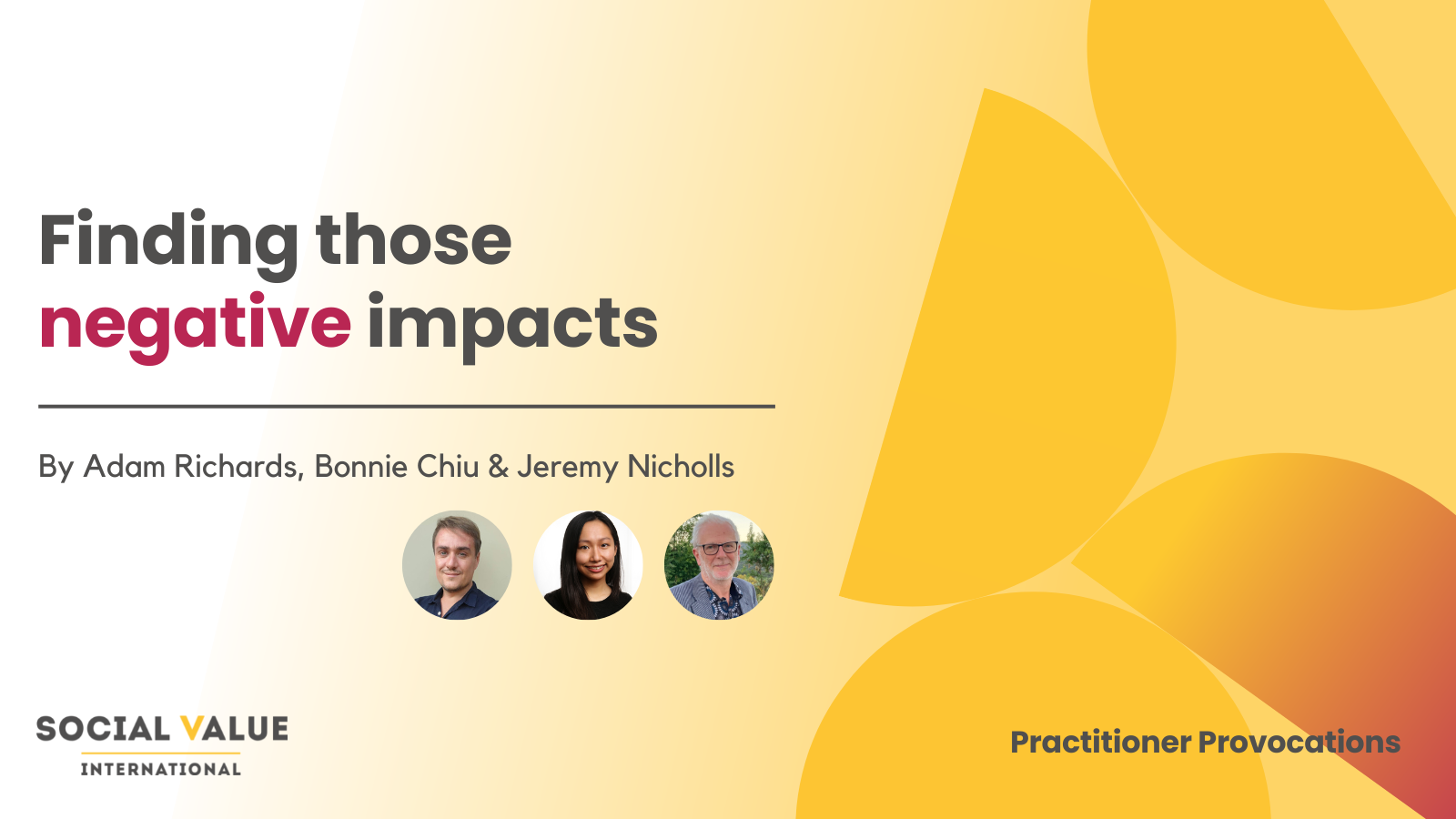Finding those negative impacts
We all know that we should consider material positive and negative impacts but finding those negatives is often hard, and sometimes harder still to accept our contribution to them.
We are psychologically biased away from them – they challenge the very core of our good intentions, and risk our positive messaging to funders and others who can hold us to account.
We also become method experts if anyone suggests a negative impact, and suddenly have lots of questions around the counterfactual – what else has happened – that we didn’t see as important for our positive impacts.
It is harder still to imagine future negatives. Even when we ask our stakeholders, they also have to imagine those negatives. There may also be cultural issues for sharing negative experiences and there needs to be strong mutual trust and respect. Harder still, no one intends to create negative impacts – so negative impacts are most often unintended, and the pathway from action to impact will never be clear.
Until negative impacts are recognised, the pathway may not even seem logical and so we can’t create a theory of change for them. Ultimately, this means the ability to manage them is extremely limited and the wellbeing of those stakeholders with less power is unlikely to be optimized, and likely even to be reduced.
In addition to the need to be accountable to those stakeholders negatively affected, legislation is starting to demand attention to negatives (or ‘adverse impacts’[1]) as governments push externalities from their balance sheets to those who create them.
So, the demands to account for negative impacts are clear. Nonetheless it can be hard to start identifying unintended. But there are some techniques that can help.
The obvious ones – using resources that are scarce or unpriced or have known side effects. Carbon being the most common. But these are dependencies as well. Our actions and the positive impacts depend on these negatives. There are often other dependencies. Unpaid labour in the supply chain for example. Run through something like the SDGs and see if you can think of others.
The relative ones – if you are working in a community and you improve the position of some people, have you widened inequality in that community?
More relative ones – if your business has some positive impacts, but the financial returns contribute to further wealth concentration. You have again increased inequality. These relative ones are often related to considerations of equality (such as the Sustainable Development Goal 5 focused on gender equality, and 10 focused on reducing inequalities).
The initially uncomfortable ones – if you are trying to create a positive change for some people that from the perspective of others could feel like a loss, or negative effect, but this negative feels wrong, you might want to ignore it. For example, working with mid-career women to promote them to senior levels in corporates, can lead to male colleagues feeling a loss of status or power. The focus is clearly not to compensate men for their perceived loss, but supporting them so they don’t feel that loss can be part of a more effective solution.
The check for completeness – so often we are working with a group, let’s say of 100 people, and the positive impacts are experienced by 50. It is crucial to also ask what has happened to the other 50 – and account for these effects. There could a range of material positive and/or negative impacts that can help you to optimize the effects of your resources. The risk of assuming about these is significant – at best you are missing opportunities to optimize, but you could also be making some people’s lives worse.
The need to go further along a chain of outcomes – it could be that for some people it appears that nothing happens because they don’t achieve the short-term goal of the activity, but is that really the case?– Let’s say they don’t get a job from an employment programme and remain unemployed. They are now likely to be demoralised and even further from work than before.
The ones of the edge. If you had 200 people applying to that programme and only 100 spaces you have 100 unhappy people. And only because of your programme. Are you accountable for that impact?
Can you hear everyone explaining why all of these are not negative impacts that (their) organisations should manage?
It’s unlikely that we will have the same conversation about an organization’s accountability for positive outcomes – these are easier to understand as a result of our activities – we mean to do good things don’t we – though unintended positive and negatives are also gold dust for innovation.
How do we challenge personal and organizational hard-wiring to better account for negative impacts. It’s easy to write about how such things are not failings but opportunities to learn and innovate, but we all know the practice is more likely to see the F word as scary, excusable, and something to ignore.
But the truth is they are opportunities to gain insights on where we can better use our resources. And the other truth is that we all know they exist. Any accounting or reporting of impacts that does not attempt to include them is a used-car sales pitch that kicks the tyres and tells us that there has only been one careful owner – whilst hiding the array of problems that lay beneath the hood.
Funders and investors regularly report that they want to hear about the negatives – hopefully also with an accompanying plan to mitigate them. Equally, internal decision-makers should be asking where improvements are planned – just as they do for other elements of decision-making. As a consequence of recognising these negatives, you have to recognise you have made trade-offs – and valuation is a technique to understand how to manage these trade-offs.
So, at the core of an ability to manage negative impacts is the fundamental need for a culture that creates the systems and mechanisms so people are held to account for them. Anything less risks the ongoing credibility of any claims about impact and creates unacceptable risks that are experienced by those we are ignoring.
[1] https://go.factset.com/hubfs/Website/Resources%20Section/Brochures/sfdr-disclosing-principal-adverse-impact-indicators-brochure.pdf

